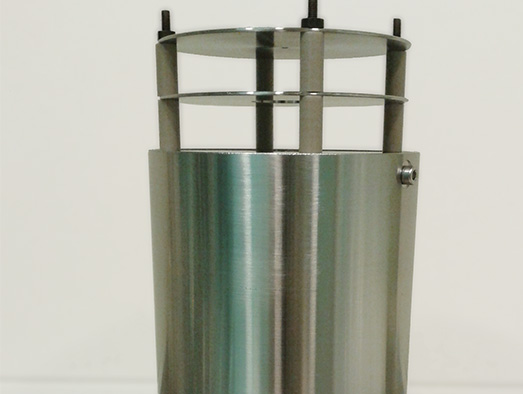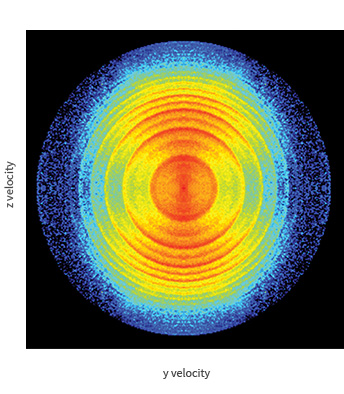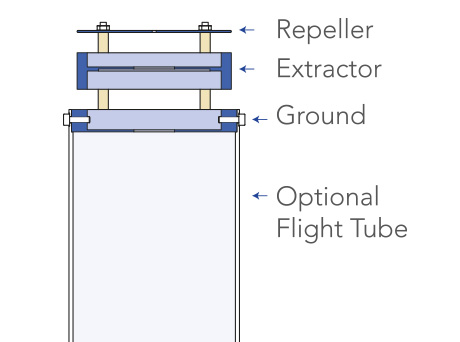

Velocitas VMI PRIME
PRIME was designed in partnership with Prof Marc Vrakking and his research group at MBI, Berlin. The ion optics have been used in experiments investigating strong field interactions and time resolved dynamics of atoms, involving photoion and high energy photoelectron imaging.
PRIME's classic design and dual voltage controls offers a user-friendly operation. The annular Repeller, Extractor and Ground are typically assembled with a stainless steel flight tube and outer mu-metal casing for shielding from perturbing fields. These features make PRIME ideal for photoelectron spectroscopy and laser characterisation experiments in femtosecond and attosecond laser laboratories.
PRIME has been used in numerous laser laboratories, including the Attosecond Physics laboratory at MBI, with proof of concept experiments including ATI and two colour ionisation of atoms using IR and XUV photon sources. PRIME demonstrates the capabilities of velocity mapping of photoelectrons up to 100 eV, with a velocity resolution < 2 %.
As with all the Velocitas VMI ion optics, PRIME comes with configurable options including: Optional flight tube and mu-metal shielding, choice of mounting options and compatibility with a selection of detector sizes and vacuum chamber configurations.
Contact us to discuss your needs >

Above: VMI of photoelectrons from mixed colour photoionisation of Ar in Velocitas VMI PRIME.
The image shows the raw 2D photoelectron angular distribution from mixed colour, two photon ionisation of argon, where the XUV light has been obtained by high harmonic generation (HHG) in argon. The imaged electrons lie on concentric rings, with the more prominent signals from ionisation by one XUV photon (11th to 29th harmonic) and weaker sidebands at intermediate energies from two-photon ionisation by XUV and IR dressing field (35 fs, 800 nm, 1 x 1012 Wcm-2).
With permission from MBI Berlin.
